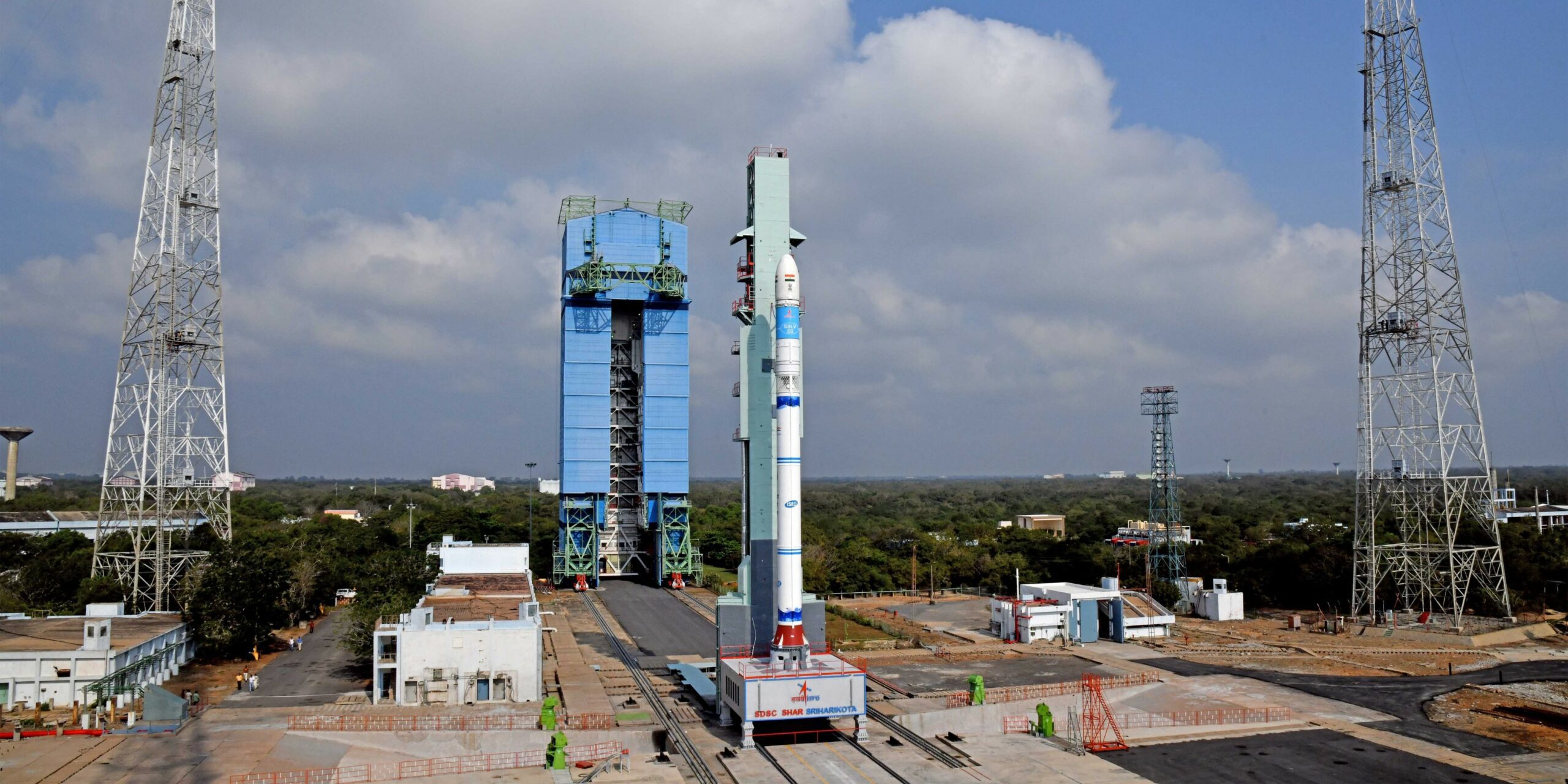The SSLV D2 rocket injected three satellites into orbit, months after the maiden mission failed to bring in the desired results.

SSLV just before the launch in Sriharikota. (isro/Twitter)
ISRO on Friday, 10 February, tasted maiden success in the small satellite launch vehicle (SSLV) segment, with its SSLV D2 rocket injecting three satellites into an intended circular orbit, months after an earlier mission failed to achieve the desired results.
The satellites included ISRO’s earth observation satellite EOS-07.
ISRO’s first mission in 2023 and SSLV’s sequel saw a strange coincidence — it was launched at 9.18 am, the same time its predecessor lifted off from the Satish Dhawan Space Centre in Sriharikota on 7 August, 2022, but could not deliver due to an orbit anomaly and flight path deviation.
With the earlier SSLV not living up to the expectations, “corrective measures” were put in place with its successor.
A visibly relieved Indian Space Research Organisation (ISRO) Chairman, S Somanath, said SSLV, in its second flight, put the three satellites in the intended orbit with precision.
“Congratulations to the space community of India… we have a new launch vehicle, the small satellite SSLV. In its second attempt, SSLV D2 placed the satellites in the intended orbit precisely. Congrats to all three satellite teams,” he said from the Mission Control Centre (MCC) soon after the successful launch that brought smiles all round.
All the problems related to the previous SSLV launch have been identified, corrective action taken and implemented in good time, Somanath added.
Mission Director S Vinod said the ISRO team made a “comeback” in just a short time after the 7 August, 2022, failure.
ISRO now has a “new launch vehicle” on offer for the launch vehicle community, he added.
Earlier, the 34-metre tall SSLV soared majestically into clear skies at 9.18 am, after a six-and-a-half hour countdown, carrying with it the EOS-07, besides Janus-1 and AzaadiSAT-2 satellites. The rocket placed the satellites into the intended 450-km circular orbit after a 15-odd-minute flight.
EOS-07 is a 156.3 kg satellite which has been designed, developed and realised by ISRO. New experiments include mm-Wave Humidity Sounder and Spectrum Monitoring Payload.
SSLV-D2/EOS-07 Mission is accomplished successfully.
SSLV-D2 placed EOS-07, Janus-1, and AzaadiSAT-2 into their intended orbits.
— ISRO (@isro) February 10, 2023
Janus-1, a 10.2 kg satellite, built by Antaris of the US, is a technology demonstrator, smart satellite mission, ISRO said.
AzaadiSAT-2, weighing about 8.2 kg, is a combined effort of about 750 girl students across India guided by Space Kidz India, Chennai. It aims to demonstrate amateur radio communication capabilities, and measure radiation, among other things, the space agency added.
According to ISRO, SSLV is capable of launching mini, micro or nanosatellites in the 10-500 kg segment into the 500 km planar orbit. It caters to the launch of satellites to Low Earth Orbits (LEO) on “launch-on-demand” basis. It provides low-cost access to space, offers low turn-around time and flexibility in accommodating multiple satellites, and demands minimal launch infrastructure, ISRO added.
It is configured with three solid propulsion stages and a velocity terminal module.
Andhra Pradesh Chief Minister YS Jagan Mohan Reddy congratulated the ISRO team for the successful launch of SSLV-D2, propelling the nation’s space initiatives forward.
The mission, which placed three satellites into the intended orbits, shows the prowess of the Indian space establishment, the chief minister said and wished the ISRO team and the youngsters associated with the project all success in future endeavours.
Andhra Pradesh Governor Harichandan said that the successful launch of the SSLV-D2 Rocket added another feather to the cap of India’s space mission.
(With inputs from PTI)

May 04, 2024

May 04, 2024

May 04, 2024

May 03, 2024

May 03, 2024

May 03, 2024